Everybody loves pizza -and this is certainly no exaggeration! Versatile, always there to comfort you, and simply delicious: what else would you need when you have a slice of pizza in your hands?
But are you sure to know everything about your favorite Italian food? Here are 20 interesting -and mostly unknown- facts about pizza.
Pizza in Italy
With over five billion pizzas sold globally every year, it is easy to understand how this typical Italian food is one of the most beloved meals all over the world! Wherever country you are visiting, you will be able to either order it or make it yourself.
Yet, in its homeland Italy, pizza is more than just simple food: it is a cultural symbol, a true institution, and a way of celebrating and enjoying the company of family and friends. Not for nothing pizza is one of the greatest symbols of Italianity and of the warmth and hospitality of its people.
Hope: The Autobiography
By Pope Francis
New York Times bestseller
First autobiography by a Pope
A vivid memory…
Get offer at Amazon.comEating out vs. takeaway
Moreover, in the Belpaese pizza is not an everyday food to eat at home. On the opposite, it is a meal to be enjoyed when eating out (even best if in group gatherings). Indeed, Italians love to go to pizzerias, and they for sure don’t mind even the waiting between the ordering and the actual arrival of the pizzas: it’s just more time to socialize and catch up with their loved ones.

This is in sharp contrast to countries like the US, where pizza is seen as the perfect takeaway food. Here the dish is to be eaten whilst watching a movie or even working. After all, Americans are famous for their hustle culture, and pizza can certainly not stop them.
Dinner food
Another basic fact you need to know about pizza in Italy is that it is generally seen as “dinner food”. It is very rare to hear an Italian saying “Andiamo a mangiare la pizza per pranzo!” (“Let’s go and have a pizza for lunch!”). The reason, most likely, is that Italians do love to take things slow and savor life, and eating pizza on a quick lunch break is seen as just a waste of special moments!
Did you know these basic facts about pizza culture in Italy? In any case, keep reading this article to find out other surprising -and for most people unknown- facts about pizza.
But before, let’s delve deeper into some interesting pizza nutrition facts -because yes, pizza can actually be a healthy meal- and understand more in detail the main differences between Italian vs American pizza.
Pizza nutrition facts
Flour, water, tomato sauce, and cheese: who says that pizza should necessarily be included in the “bad foods” list? On the contrary, Italian pizza can actually constitute a well-balanced and complete meal, it all depends on the toppings you decide to put on it!
Indeed, if 100 grams of Italian pizza Margherita contains around 285 calories, 36 grams of carbohydrates, and 10 grams of fats, these numbers can rapidly increase when we decide to add topping such as meat, extra cheese, oily sauces, or fried veggies on it.
However, if we choose to stick to the basis, and opt for simpler and fresher topping ingredients -such as seasonal grilled veggies, ricotta cheese, or even leaner cuts of meat- pizza can actually become a macro-balanced and nourishing meal.
Let’s briefly see why.
Healthy macronutrients in pizza
Pizza is a very macro-balanced meal and contains three important nutrients:
- Proteins from the cheese and toppings (such as lean meat and fish), useful in maintaining and improving muscle mass.
- Healthy fats from the extra-virgin olive oil
- Fibers from the veggies, that can help lower cholesterol, promote regular bowel movements, and play a role in managing your weight
In addition, the tomato sauce is a great source of lycopene, a powerful anti-oxidants that can help fight cell aging and the action of free radicals, while the mozzarella cheese contains calcium, a mineral essential for building and maintaining bone health.
This is why Italian pizza can easily be part of a healthy and varied diet -but always in moderation, as with any other food.
But can we say the same about American pizza? Or are there major differences both in terms of nutritional profile and main characteristics?
Italian pizza vs American pizza
With more than 3 billion pizzas eaten every year, and a total of $38 billion spent on this mouthwatering food, Americans are among the biggest pizza-lovers out there. But how does “their” pizza differ from the traditional Italian one?
As said above, one of the main differences between Italian vs American pizza is the way in which this food is conceived: from being the occasion for a convivial meal in Italy to being a quick takeaway meal to be consumed while engaging in work or other activities in the United States.
The crust
When looking then at the main characteristics of the Italian vs American pizzas, the greatest differences lie in their respective size and in the thickness of the crust.
American pizzas, both in New York- and Chicago-style variants, are generally much larger than their Italian counterparts and have a thicker crust. On the contrary, the crust of traditional Italian pizzas is on average thinner than their American counterpart. Neapolitan pizzas still have a somewhat larger and more airy cornicione or crust than pizza Romana.
The difference in size is mainly due to sharing intentions. The larger American pizzas are meant to be shared. In Italy, a pizza is meant to be eaten by one person.
Pizza toppings
Another major difference comes with the choice of toppings: Americans love to exaggerate (with) the ingredients they put over their pizza base (lots of different meat cuts, sauces, and extra cheese), and often come up with questionable combinations, not to mention the infamous pineapple on pizza.
Italians, on the other hand, have a diametral opposite approach to pizza toppings: quality goes always before quantity. This is why they prefer fresher and lighter ingredients, such as seasonal veggies, fish, or lean meat cuts, and they place great effort in creating balanced and sophisticated ingredient combinations.
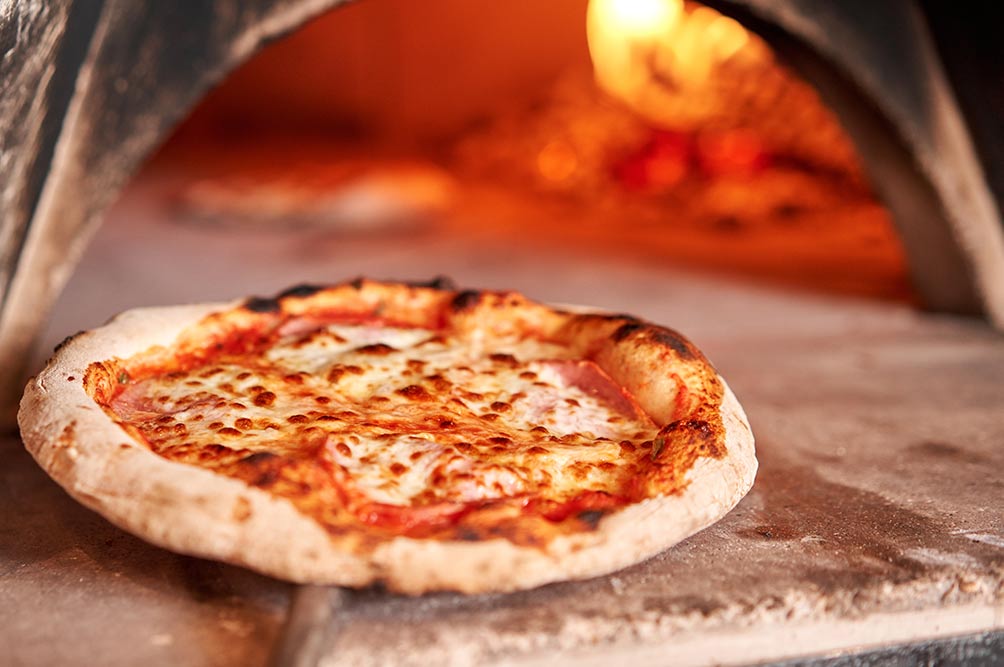
Sauce
In addition, Italian pizza sauce is generally lighter, made with fresher ingredients, and contains herbs and spices, such as garlic, basil, and oregano. In contrast, the sauce used for American pizzas is generally denser, cooked for longer, and made out of canned tomatoes.
Goes without saying that these differences are then also reflected in the nutritional profile of the American vs Italian pizza, with the first being generally more unhealthy, richer in saturated fats, cholesterol, and calories. This is why the Italian approach to pizza is generally way healthier, especially if you are on a diet
If you are eager to learn more about the differences between Italian vs American pizza, this article is for you.
Let’s now jump to the part you are all waiting for: our favorite 20 interesting pizza facts.
20 interesting and unknown facts about pizza
We said that pizza is considered more than just food in its homeland, Italy, and that it can even be a quite healthy meal. We also discussed the main differences between Italian vs American pizza.
Let’s now discover 20 interesting, and I bet for some of you, unknown pizza facts.
FACTS ABOUT THE HISTORY OF PIZZA
1. Pizza is older than you might think – and was not born in Italy!
Even though conventionally the origins of the Italian pizza as we know it today are placed around the end of the nineteenth century, the first iterations of this delicious food can be traced back to the Babylonians and Egyptians.
Indeed, flatbreads covered with different types of herbs and meat, and then cooked in wood-fired ovens, were a very popular item on their “menu” and can be considered the ancestors of modern pizza.
2. The Margherita Pizza owes its name to a Queen
Let’s picture this: it’s the year 1889, Italy was newly unified, and King Umberto I and Queen Margherita were touring the country for the first time. One of their planned stops was the city of Naples.

What better way to celebrate their arrival than with a pizza that resembles the colors of the new Italian flag? This is what Raffaele Esposito, a baker from Da Pietro Pizzeria, should have thought that day when creating for the first time a pie with red tomato sauce, white mozzarella, and green basil. This is when the most popular, and replicated, pizza in the world was born. It is probably more of a story, brought into the world by Esposito, than reality, but a nice story does not always have to be true.
3. The popularity of pizza boomed overseas after the end of WWII
Until the mid-40s, pizza was a staple food only in the South of the Italian peninsula. The popularity of pizza started increasing in other areas after the end of World War II. People from Southern Italy started emigrating to the North of the country and overseas (mainly advanced economies such as Australia and the US), bringing along their food traditions, including the art of pizza making.
Since then, the popularity of pizza has never stopped increasing, and today it is safe to say that pizza is one of the most popular and consumed food in the world.
4. The first American pizza shop was opened in New York
Sensing the potential earnings of selling pizza in its city, in 1905 Gennuardo Lombardi opened the first American pizza shop on Spring Street in New York City.
Mixing Italian and non-Italian ingredients, American pizza developed into a dish of its own and, in the following decades, began to gain incredible popularity, to the point that it became a staple food in New York, and pizzerias started to open on every corner of the Big Apple.
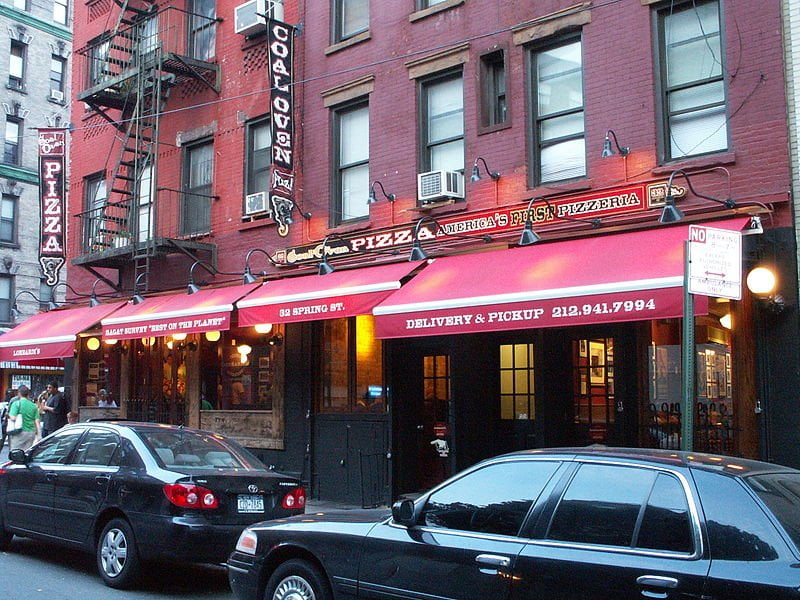
From there, American pizza moved also to other U.S. cities, where several variants of the New York-style pizza began to appear on the market -the most famous one being the Chicago-style. The ensuing debate on which one is the best -or even came first – is then history.
5. The first frozen pizza was sold in the 1950s
The first frozen pizza was brought to the market in the 1950s, with Celentano Brothers being the first brand to be sold nationally. However, we have to wait until the 1990s to find modern “rising crust” frozen pizzas on supermarket shelves.
Nowadays, more than 350 million tons of this quick and easy-to-make product are sold in the U.S. each year.
FACTS ABOUT PIZZA CONSUMPTION AROUND THE WORLD
6. 350 slices of pizza sold each second
Globally, over five billion pizzas are sold every year. That’s about 350 slices of pizza sold each second, 1.26 million per hour, and 30 million each day.
Assuming that the reading time of this article is around 10 minutes, by the end of it almost 210.000 slices of pizza would have been sold…
7. Americans aren’t the biggest pizza consumers
Even though Americans consume around 3 billion pizzas each year, this is not enough to make them the greatest pizza lovers.
Indeed, the first place on the podium goes to Norway, where each person consumes an average of 11 pounds of pizza a year. This is a monumental number when considering that pizza started to become a popular food in this country only during the 1980s.
8. A pizza restaurant at every corner -especially in the U.S., Italy, and Brazil
If you feel like pizza restaurants are popping out at every corner, you might be right! Indeed, there are more than 245,000 pizza restaurants in the world, with the U.S, being the country with the highest number of pizza restaurants with a 36% coverage of all pizza restaurants worldwide.
Second is, as you might expect, Italy with 42.288 pizzerias (17%). Third is Brazil, with around 32.283 pizzerias all over the country. These three countries combined are hosting up to 67% of the world’s total amount of pizza restaurants.
9. The effects of the pandemic on the U.S. pizza industry were not so bad
Due to the effects of the pandemic, 55.9% of pizza restaurants in the US reported lower sales.
However, this did not mean that Americans cut their pizza consumption altogether.
Actually, the reality was far from that. Indeed, they just switched to pizza delivery which, on the other hand, witnessed significant growth over the last two years, with almost $14 billion in revenues.
GENERAL FACTS ABOUT PIZZA
10. There are more types of Italian pizza than Neapolitan pizza
Even though Neapolitan pizza can be considered the oldest and most popular and, for many, the best type of Italian pizza, it is certainly not the only one on the market. As a matter of fact, different regions of the peninsula have their own distinct pizza variants, different in both the proportions between their main ingredients and the dynamics of baking.
Among the most renowned ones are Pizza Romana (thinner than Neapolitan pizza, it can be found in almost all the pizzerias throughout the country), fried pizza, pizza alla pala (cooked directly on the ‘paddle’ and with a softer dough), and pizza al padellino (the American pan pizza). All equally delicious and loved by everyone!
11. Standard of Neapolitan pizza is set by the True Neapolitan Pizza Association
Speaking about Neapolitan pizza, did you know that a true Neapolitan pizza should have some specific characteristics, regulated by the Associazione Verace Pizza Napoletana -AVPN (True Neapolitan Pizza Association)? Indeed, the AVPN has decided to set some clear boundaries as to exactly what does and doesn’t count as real Neapolitan pizza, to grant the dish maximum dignity.

In short, a true Neapolitan pizza should have a large, airy, and soft crust, with a thinner inner part, and a diameter of no more than 35 cm. In addition, the bottom of the pizza should be golden, have some burnt spots, and all the ingredients should be fresh and, preferably, come from the region of Campania.
12. A UNESCO cultural heritage
In 2017 the art of making pizza -a term that includes the know-how, visual expressions, jargon, and gestures performed by Neapolitan pizzaioli- was added to UNESCO’s list of intangible cultural heritage.
This was the first time a culinary practice was granted this status and was certainly a turning point in the reinforcement of the national identity value associated with pizza.
13. Saturday night is pizza night!
Uber Eats found that most Americans consume pizza as their Saturday night dinner.
This outcome is in line with the results of a study about pizza consumption habits conducted in Italy. The majority of interviewees stated that the end of the week is their favorite time to go out and eat pizza. And this is not hard to believe: tables on Italian pizzerias are always fully booked on the weekend.
14. The best pizza toppings according to Italians
Italians love to keep their pizza toppings quite simple, with Margherita (tomato sauce, mozzarella, and basil) being (still) one of their top choices. Following are Marinara (just tomato sauce, garlic, olive oil, and -optionally- anchovies), Capricciosa (ham, olives, and artichokes), and lastly Ortolana (a Margherita topped with lots of grilled veggies).
15. And the best ones according to Americans
As said above, American love to exaggerate when it comes to pizza toppings: the more, the better. In addition, unlike Italians, they love to add several types of meat at once to their pizzas.
According to a survey, pepperoni is overwhelmingly the most popular choice, with almost 36% of Americans saying it is their go-to pizza choice. in the second place is sausage (14%), followed by vegetables (38%) and, lastly just cheese (8% of Americans prefer this pizza topping).
16.Pineapple on pizza is not as popular as you might think
Pineapple on pizza is actually not such a popular pizza topping as you might think: only 12% of Americans claim that it is among their three favorite pizza toppings!
In addition, people living in western states -including Hawaii– are especially likely to have a preference for pineapple-topped pies. This is not surprising considering that the pineapple on pizza trend originated on these islands…but is this actually true?
17. Hawaiian pizza was not invented in Hawaii
Surprisingly, Hawaiian pizza (topped with ham and pineapple) was not created on these tropical islands. Indeed, it first saw the light of the world in 1962 in Canada, where a Greek immigrant called Sam Panopoulos thought that combining salty and sweet ingredients on the pizza dough would attract new customers to his pizzeria, intrigued by this innovative combination.

Moreover, at the time Hawaii had just officially become an American state, and canned pineapple began to be imported into North America from there, providing Panopoulos with the crucial ingredient for its unique pizza flavor.
From then, everything is history – comprising the indignation of pizza purists about putting fruits on pizza!
18. When in Italy, use a fork and knife to eat your pizza!
Unlike in the United States, pizza in Italy does not come pre-sliced.
In addition, using a fork and knife to eat pizza is necessary because the most famous type of Italian pizza -the Neapolitan one- is made of a very thin and soft dough -especially at the center- and it’s almost impossible to eat a slice with your hands without all the toppings falling off.
19. But if you want to eat it with your hands, there is Pizza al Portafoglio!
Pizza al portafoglio is a typical Neapolitan type of pizza, which is generally consumed as street food. Besides being relatively smaller in comparison to the pizza you can buy in a pizzeria, its main characteristic is that it can be folded into four parts so that it is easier to eat with your hands while walking around the city.
In addition, it is also quite cheap: its price range from 1 to 2 euros. A real must-try when you are in Naples!
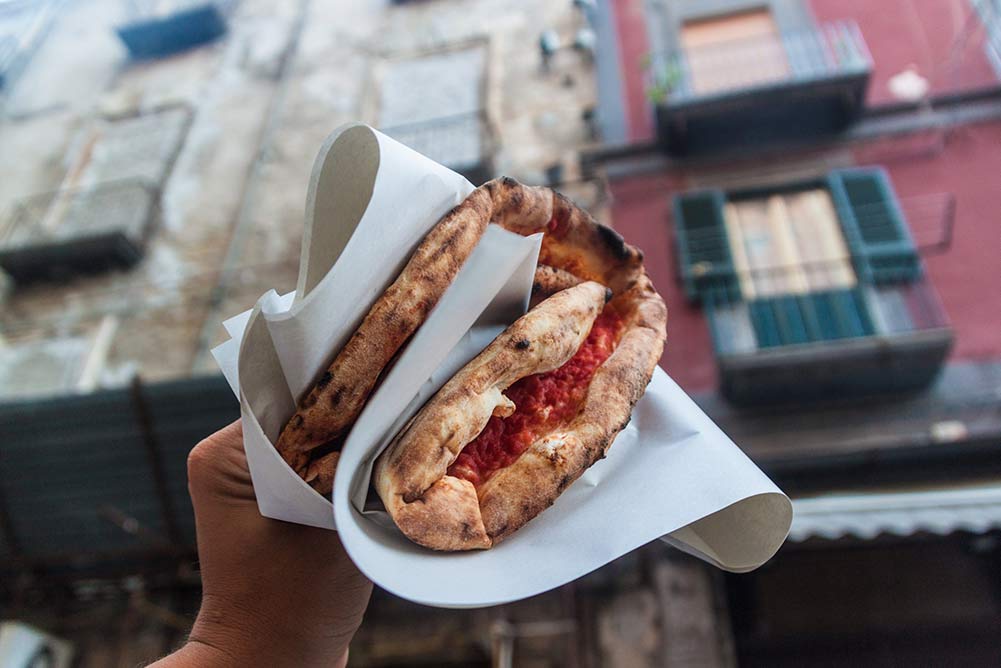
20. The best restaurants to eat Neapolitan pizza
According to the food experts of the New York Times, the list of the 50 best places where you can eat authentic Neapolitan pizza sees on the first three places on the podium “I Masanielli di Francesco Martucci” (Caserta, Italy), “Una Pizza Napoletana” (New York, USA), and “Peppe Pizzeria” (Paris, France).
In addition, the list includes also several other pizza restaurants located in Spain, Argentina, and Australia. You don’t necessarily have to go to Italy to eat a good pizza…but I am not sure the Italians out there would agree with this last affirmation.
In conclusion
After all this talking about pizza, we bet your mouths are all watering. And how could they not? Pizza is such a delicious, versatile, and even healthy, food. Therefore, we hope that you are all now running to buy a slice of this deliciousness!
If you do eat a pizza at home, stream one of the selected Italian movies in the meantime.
Also read:


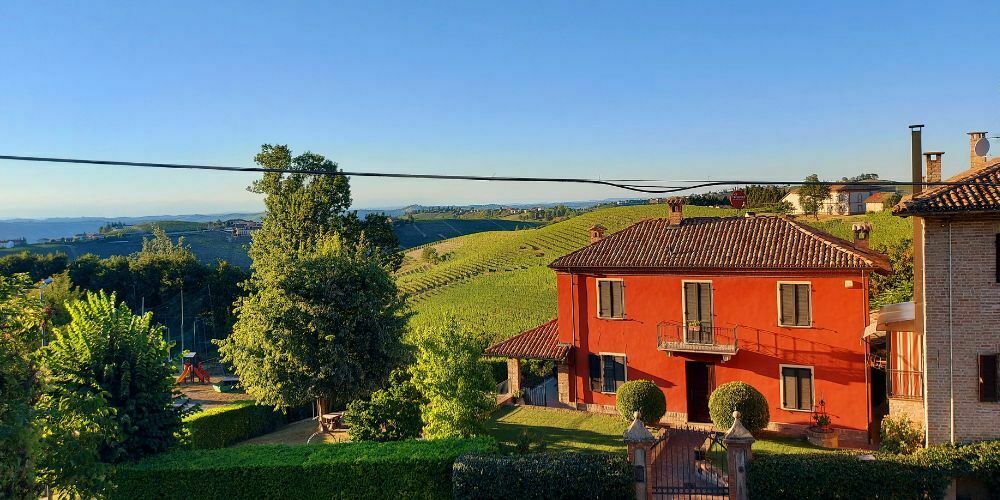
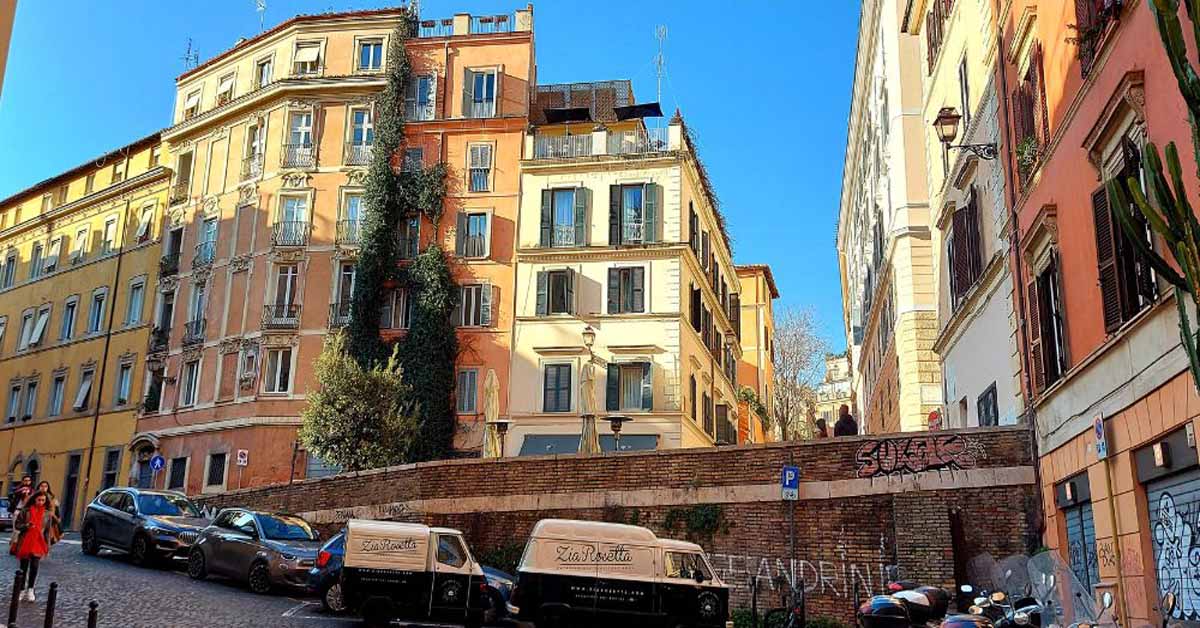
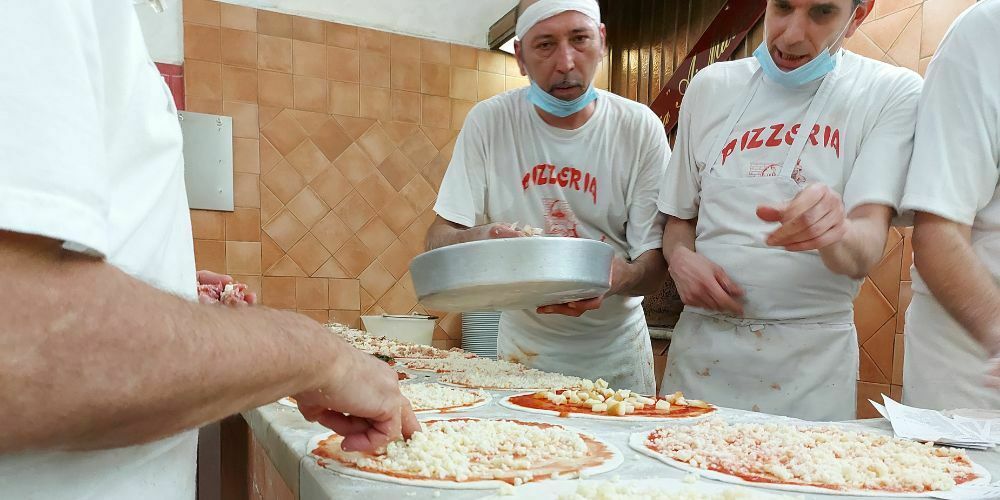

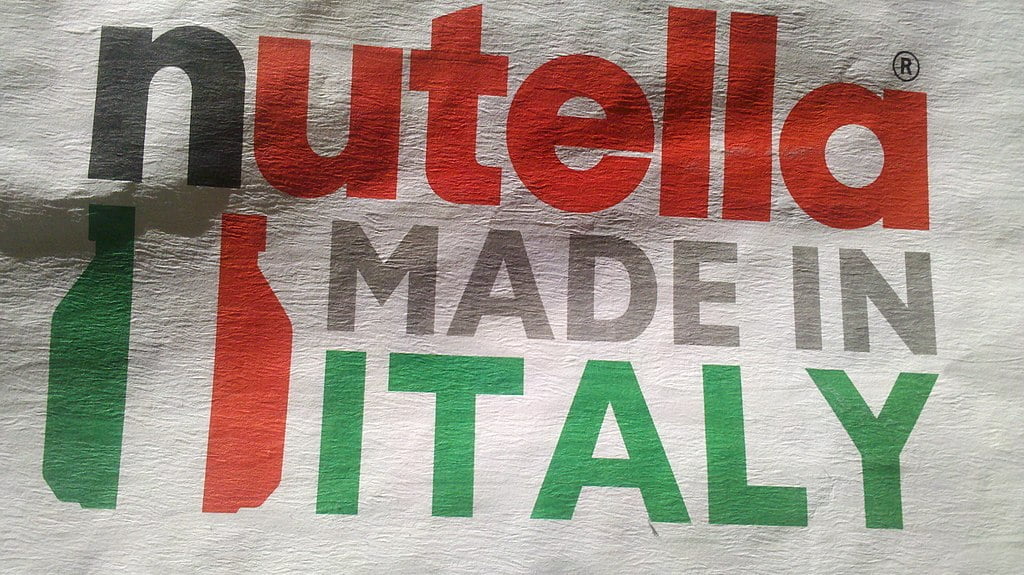
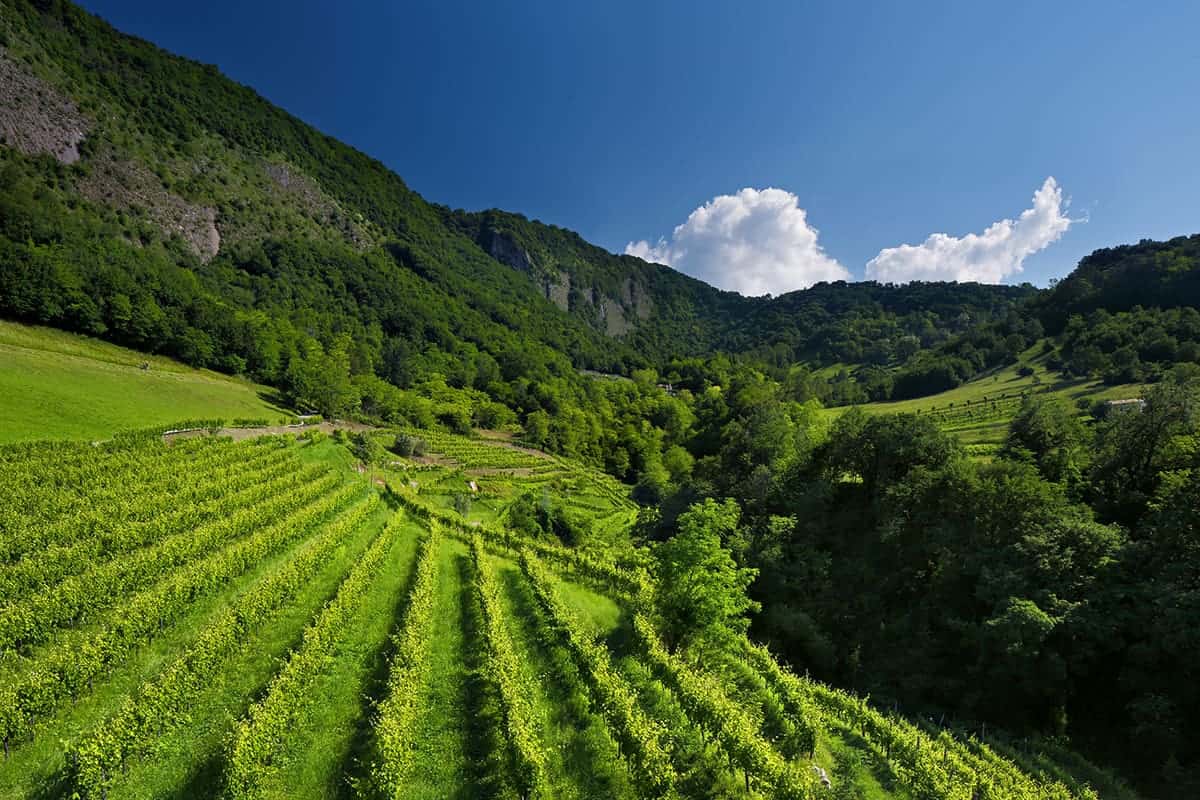
Please continue writing so well.